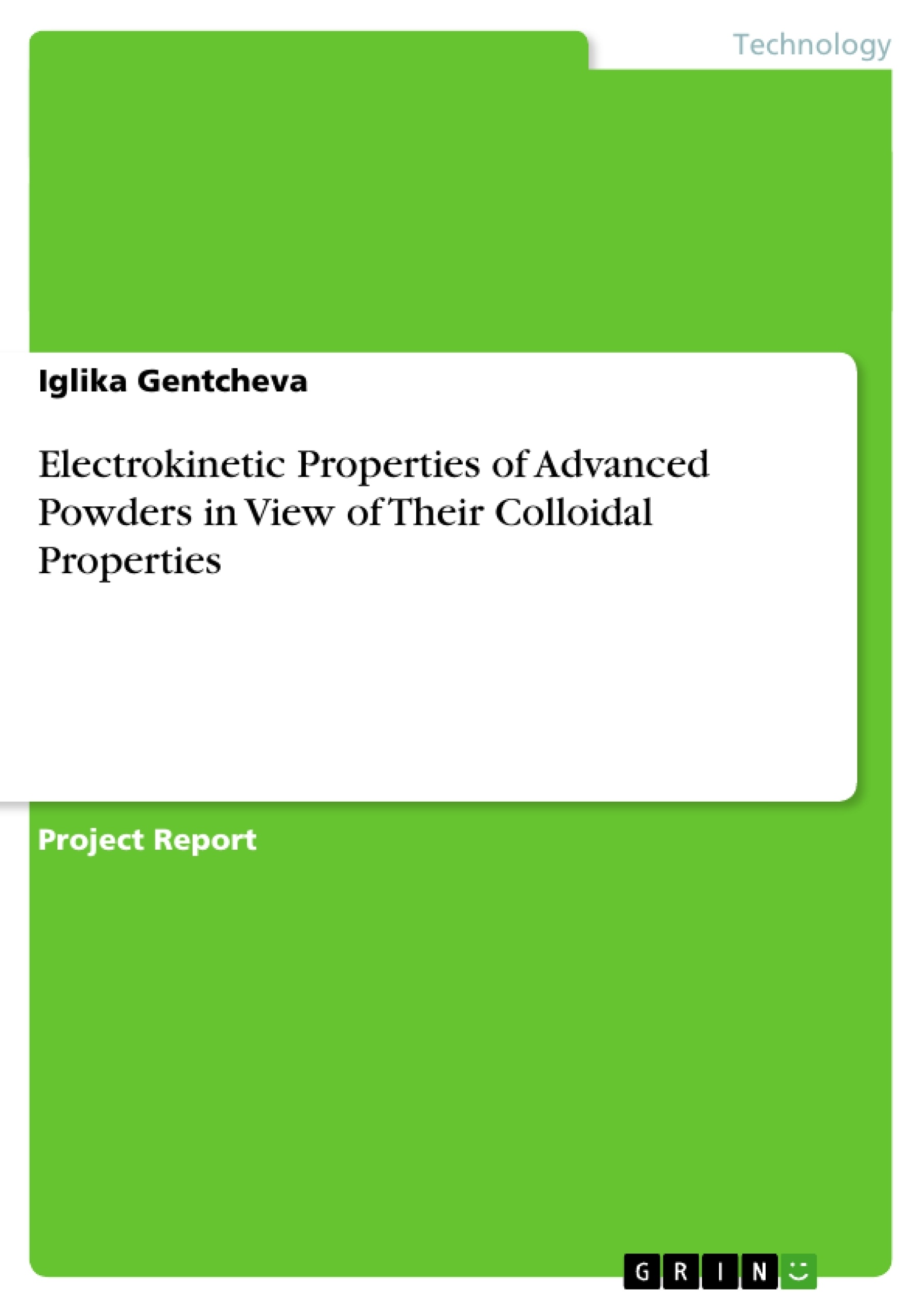Rapid development of technologies requires introduction of new materials as well as improvement of the existing one (Kudyba-Jansen et al. 2000).
The very fine fumed metal oxide γ − Al2O3 (d50 = 0.13nm, Desussa, Germany) has been investigated on the possibilities for development of green bodies though the innovative wet shaping process gel casting.
Thus, this study in particular is focused on characterisation of the suspension stabilities promoted by two commercially produced polyelectolytes Dolapix CE64 and Dolapix A88 (Zschimmer-Schwarz, Lahnstein, Germany). The optimal dispersant dosage has been found and the suspension stability has been further evaluated.
Finally Dolapix CE64 has been found to be most favourable for enhancing the stability of aqueous γ − Al2O3.
Inhaltsverzeichnis (Table of Contents)
- ABSTRACT
- CHAPTER I
- INTRODUCTION
- 1.1. Task Description and Objectives
- 1.2. Work Load and Study Project Requirements Agreement
- CHAPTER II
- COLLOIDAL PROCESSING OF CERAMICS- PARTICLE INTERACTIONS
- 2.1. van der Waal Forces
- 2.2. Electrostatic forces
- 2.3. Steric Forces
- 2.4. Electrosteric Forces
- 2.5. Depletion Forces
- CHAPTER III
- MATERIALS AND METHODS
- 3.1. Al2O3 Properties
- 3.2. Dispersants Properties
- 3.3. Suspension Preparation
- 3.4. Investigation Techniques
- CHAPTER IV
- RESULTS AND DISCUSSION
- 4.1. Al2O3 Suspension Characterization
- 4.2. Dispersant Dosage Optimization
- 4.3 Comparison of the dispersants effect on the zeta potential of the 5% Y-Al2O3 suspension
- 4.4. Comparison of the dispersants effect on the ionic strength of the 5%- y-Al2O3 suspension
- 4.5. Assessment of the Dispersants with Reference to Point of Zero Charge (pzc)
- 4.6. Dispersant Behaviour Model
- 4.7. Experimental comparison of zeta potential and streaming potential of Y-Al2O3 slurry
- CHAPTER V
- CONCLUSION
- REFERENCES
Zielsetzung und Themenschwerpunkte (Objectives and Key Themes)
This study investigates the use of gel casting, a novel wet shaping process, to develop green bodies using fine fumed metal oxide y-Al2O3. The main objective is to characterize the suspension stabilities promoted by two commercially available polyelectrolytes, Dolapix CE64 and Dolapix A88.- Characterization of suspension stabilities using commercially produced polyelectrolytes
- Optimization of dispersant dosage for improved suspension stability
- Assessment of the effect of dispersants on zeta potential and ionic strength of the y-Al2O3 suspension
- Comparison of dispersant behavior models and experimental data
- Evaluation of the effectiveness of Dolapix CE64 and Dolapix A88 for enhancing the stability of aqueous y-Al2O3 suspensions
Zusammenfassung der Kapitel (Chapter Summaries)
- Chapter I: Introduction This chapter outlines the study's task description and objectives, which include characterizing suspension stabilities and optimizing dispersant dosage for the development of green bodies using y-Al2O3. It also details the scope and requirements of the study project.
- Chapter II: Colloidal Processing of Ceramics - Particle Interactions This chapter discusses the fundamental principles behind particle interactions in colloidal processing of ceramics. It delves into different types of forces, including van der Waals forces, electrostatic forces, steric forces, electrosteric forces, and depletion forces, which influence the behavior of ceramic particles in suspension.
- Chapter III: Materials and Methods This chapter details the materials and methods used in the study. It describes the properties of the y-Al2O3 powder and the two dispersants, Dolapix CE64 and Dolapix A88. It also outlines the procedures for suspension preparation and the investigation techniques used to characterize the suspensions.
- Chapter IV: Results and Discussion This chapter presents the results of the study and discusses their implications. It covers the characterization of the y-Al2O3 suspension, optimization of dispersant dosage, comparison of dispersant effects on zeta potential and ionic strength, assessment of dispersant behavior, and experimental comparison of zeta potential and streaming potential.
Schlüsselwörter (Keywords)
This study focuses on the development of green bodies using fine fumed metal oxide y-Al2O3 through gel casting, a novel wet shaping process. The key terms and concepts include: suspension stability, dispersants, polyelectrolytes, zeta potential, ionic strength, point of zero charge, and streaming potential. The study uses commercially produced polyelectrolytes, Dolapix CE64 and Dolapix A88, to improve the stability of y-Al2O3 suspensions.- Quote paper
- Iglika Gentcheva (Author), 2006, Electrokinetic Properties of Advanced Powders in View of Their Colloidal Properties, Munich, GRIN Verlag, https://www.grin.com/document/114242



